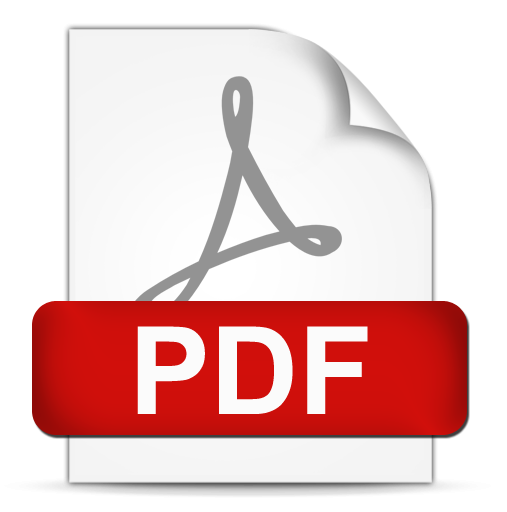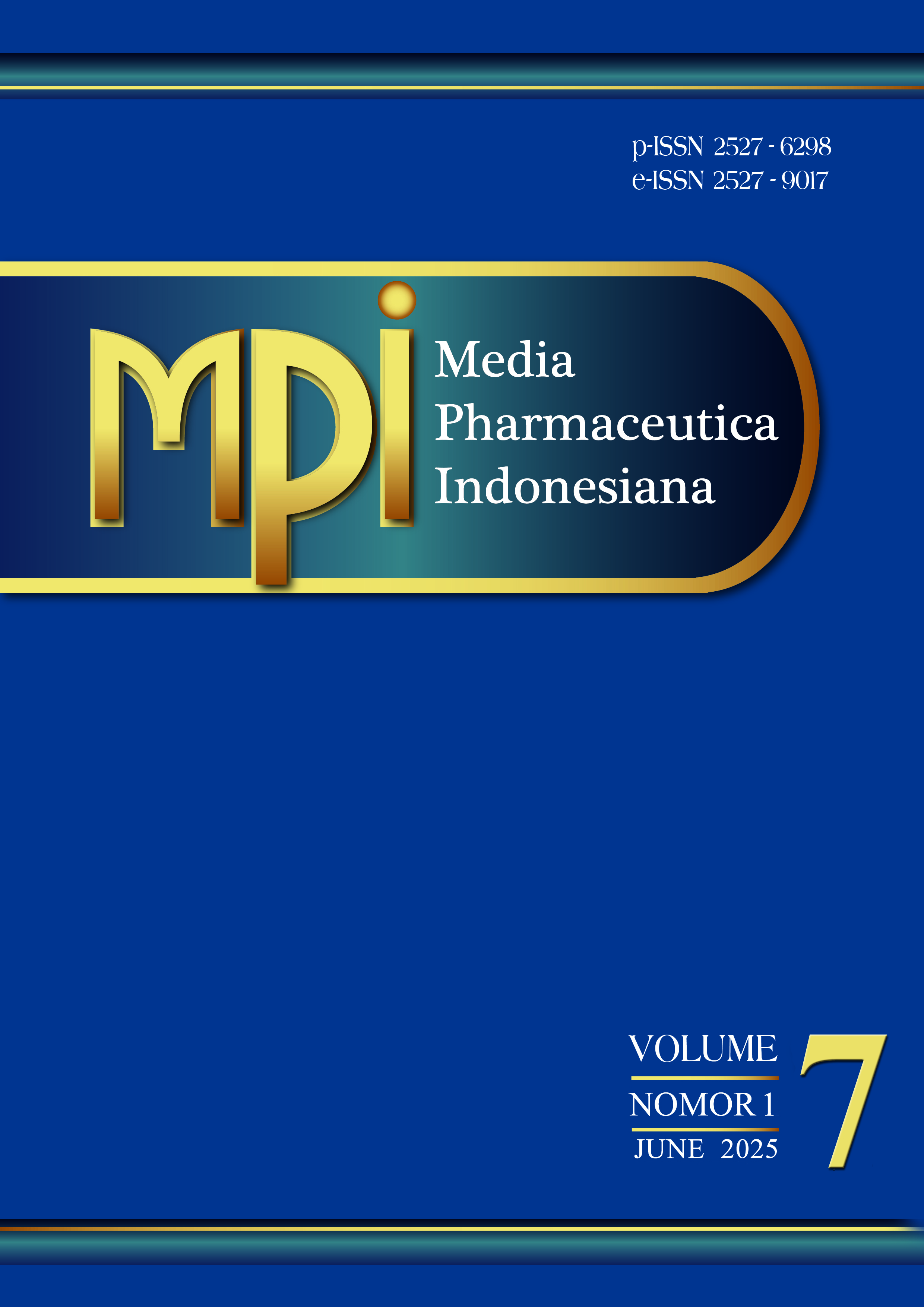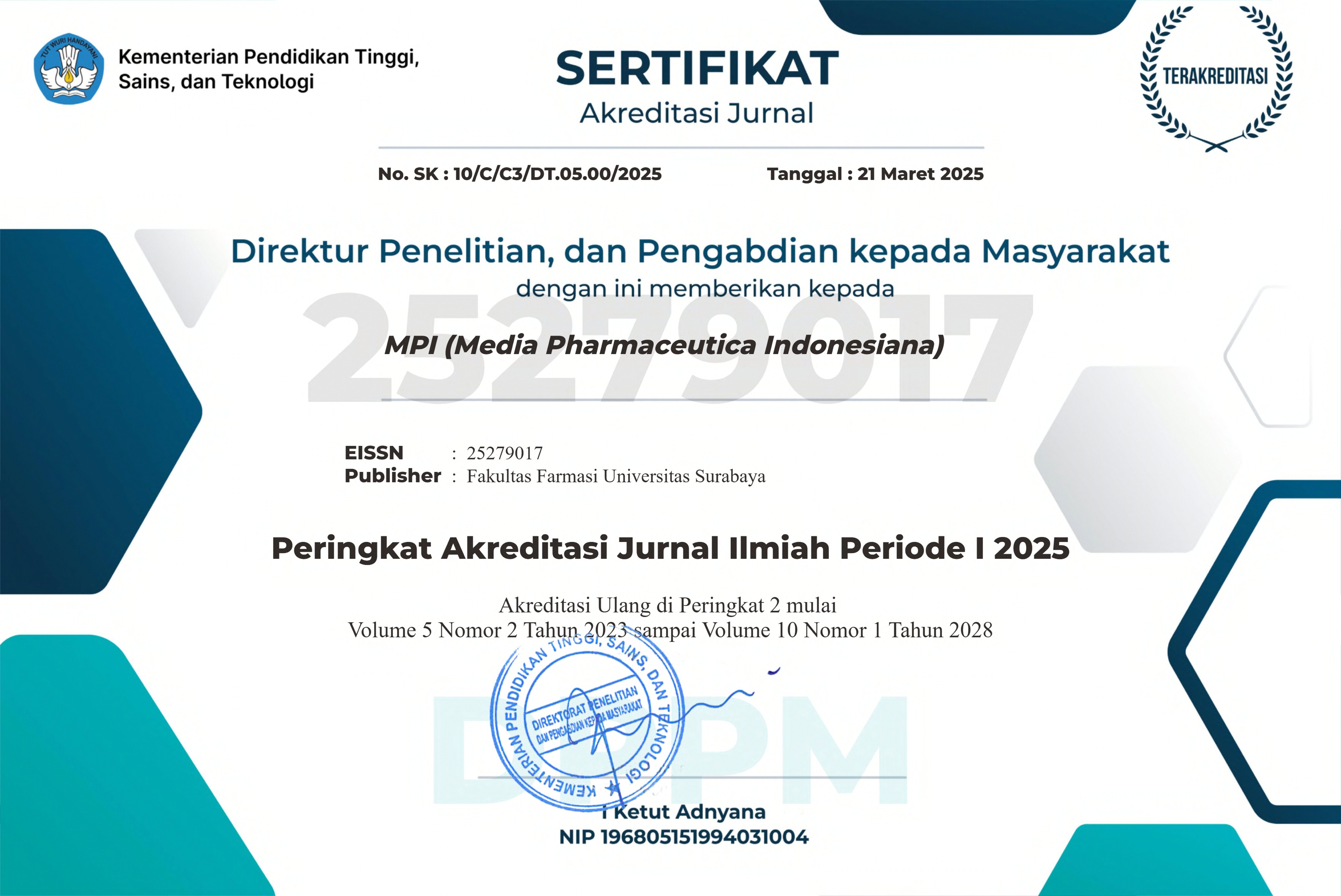Optimization of Papaya Leaf Extract Cream Using Stearic Acid and Triethanolamine via Simplex Lattice Design
 Abstract Views:
360 times
Abstract Views:
360 times
 PDF Downloads:
341 times
PDF Downloads:
341 times
Abstract
Papaya leaves (Carica papaya L.) are known to contain bioactive compounds such as flavonoids, alkaloids, tannins, and saponins, which exhibit antiseptic, anti-inflammatory, antifungal, and antibacterial properties, making them promising for topical pharmaceutical preparations. However, achieving optimal physical characteristics in cream formulations requires careful selection and proportioning of emulsifiers. This study investigates the effect of varying ratios of stearic acid and triethanolamine on the physical properties of creams containing ethanol-extracted papaya leaf extract. The extract was obtained via maceration using 96% ethanol and confirmed to contain active compounds through phytochemical screening and thin-layer chromatography. Eight formulations were developed using a Simplex Lattice Design (SLD) with stearic acid concentrations ranging from 15–17% and triethanolamine from 2–4%. Physical evaluations included tests for pH, viscosity, adhesion, and spreadability. All formulations met standard of cream quality requirements, but the optimal formula was identified at 15.20% stearic acid and 3.79% triethanolamine, offering the most desirable physical characteristics. This formulation strategy demonstrates the potential for producing effective and stable papaya leaf creams, with implications for natural-based dermatological product development.
Submitted: 05-05-2025, Revised: 18-06-2025, Accepted: 25-06-2025, Published regularly: June 2025
Downloads

This work is licensed under a Creative Commons Attribution-ShareAlike 4.0 International License.
Articles published in MPI are licensed under a Creative Commons Attribution-ShareAlike 4.0 International (CC BY-SA) license. You are free to copy, transform, or redistribute articles for any lawful purpose in any medium, provided you give appropriate credit to the original author(s) and MPI, link to the license, indicate if changes were made, and redistribute any derivative work under the same license.
Copyright on articles is retained by the respective author(s), without restrictions. A non-exclusive license is granted to MPI to publish the article and identify itself as its original publisher, along with the commercial right to include the article in a hardcopy issue for sale to libraries and individuals.
By publishing in MPI, authors grant any third party the right to use their article to the extent provided by the CC BY-SA license.

 DOI:
DOI:










